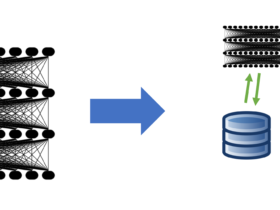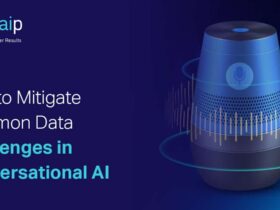In today’s fast-paced market, technology is reshaping how companies operate and grow. Artificial intelligence (AI) is at the forefront of this transformation, offering innovative solutions to streamline processes and boost efficiency. For small business owners, these tools are becoming essential to stay competitive and scale effectively.
From automating repetitive tasks to enhancing customer service with chatbots, AI is democratizing access to advanced resources. This allows companies to focus on strategic goals while reducing operational costs. Experts like Dylan Sellberg at HubSpot highlight how these tools can drive productivity and improve decision-making.
In this article, we’ll explore practical strategies and tools that empower businesses to thrive. Whether it’s optimizing marketing campaigns or improving management processes, AI offers opportunities for growth and innovation. Let’s dive into how you can harness this technology to elevate your business.
Key Takeaways
- AI tools automate tasks, saving time and resources.
- Chatbots enhance customer service with 24/7 support.
- Marketing automation improves campaign efficiency.
- AI reduces operational costs by up to 30%.
- Small businesses can scale effectively with AI solutions.
Understanding AI and Its Impact on Small Business
Entrepreneurs today have access to tools that redefine efficiency and productivity. One such technology is artificial intelligence, which mimics human intelligence to process data and make decisions. For business owners, this means automating repetitive tasks and focusing on strategic goals.
Defining Artificial Intelligence for Entrepreneurs
Artificial intelligence refers to systems that perform tasks requiring human-like thinking. These include visual perception, speech recognition, and language translation. For example, chatbots can handle customer inquiries, while software like Agent GPT automates complex processes.
How AI Transforms Business Operations
AI streamlines operations by automating routine tasks. This reduces manual effort and allows teams to focus on innovation. Companies like HubSpot and Salesforce use these tools to enhance productivity and improve customer service. For instance, AI can analyze large datasets to predict market trends and personalize customer experiences.
By integrating AI, businesses can achieve significant cost savings and operational efficiency. This technology not only supports internal processes but also enhances customer interactions, creating a seamless experience for all stakeholders.
Effective AI for Small Business Growth Strategies
Modern companies are embracing innovative tools to stay ahead in competitive markets. These solutions not only streamline operations but also unlock new opportunities for growth. Let’s explore how industry leaders are leveraging these resources to achieve remarkable results.
Real-World Examples from Industry Leaders
One standout example is Ru9, an online mattress retailer. By implementing Performance Max campaigns, they achieved a 10X return on investment for every dollar spent. This strategy allowed them to scale from a team of 2 to 48 employees, showcasing the power of data-driven marketing.
Another success story comes from Wheel the World, which used Google Analytics 4 to enhance lead generation. By analyzing customer engagement and search term performance, they maximized bookings and improved their overall efficiency. These examples highlight how the right tools can transform operations and drive success.
Here are some actionable strategies inspired by these leaders:
- Automate repetitive tasks to save time and reduce errors.
- Use chatbots to provide 24/7 customer support, enhancing satisfaction.
- Integrate data analytics to personalize marketing campaigns and improve ROI.
By adopting these approaches, companies can focus on high-value tasks, boosting productivity and reducing costs. As Dylan Sellberg from HubSpot notes, “The right tools empower teams to work smarter, not harder.”
For entrepreneurs considering these solutions, it’s essential to align strategies with business goals. Whether it’s improving customer service or optimizing marketing efforts, the right tools can make all the difference. Learn more about how we handle data in our privacy policy to ensure secure and effective implementation.
Essential AI Tools and Applications for Small Businesses
Innovative solutions are reshaping how companies tackle daily challenges. From automating repetitive tasks to enhancing customer interactions, the right tools can make a significant difference. Let’s explore some of the most effective applications and how they integrate with existing systems.
Tool Overviews and Use Cases
Chatbots are a game-changer for customer service. They provide 24/7 support, answering queries instantly and freeing up time for your team. For example, tools like HubSpot’s chatbot can handle FAQs, book appointments, and even process orders.
CRM integrations, such as Salesforce’s Einstein AI, offer advanced data analysis. They help businesses predict trends, personalize marketing campaigns, and improve sales strategies. These tools streamline operations, making it easier to focus on growth.

Integrating AI with Existing Software
One common challenge is integrating new tools with legacy systems. Custom APIs and middleware can bridge this gap, ensuring seamless data flow. For instance, Zia by Zoho CRM integrates with websites and social media, providing a unified platform for customer support.
Another example is Mailmodo, which enhances email marketing by integrating with existing CRM software. This allows businesses to create personalized campaigns quickly, boosting engagement and conversions.
Here are some tips for successful integration:
- Start with a pilot project to test compatibility.
- Use middleware to connect disparate systems.
- Ensure data security with SOC-2 Type 2 certified tools.
For businesses looking to improve their online presence, leveraging SEO-optimized content can drive traffic and enhance visibility. By combining the right tools and strategies, companies can achieve remarkable results.
Step-by-Step Guide to Integrate AI in Your Business
Adopting new technologies starts with understanding where they can make the biggest impact. For many companies, the first step is identifying specific problems that can be solved with advanced tools. This ensures resources are focused on areas that drive real results.
Identifying Your Business Problem
Begin by evaluating your current operations. Look for repetitive tasks or inefficiencies that consume time and resources. For example, manual data entry or slow customer service responses are common pain points.
Ask yourself:
- Which processes take the most time?
- Where do errors frequently occur?
- What tasks could be automated to free up your team?
By pinpointing these areas, you can determine where atoollike achatbotor marketing automation software can have the greatest impact.
Setting Up a Pilot Project
Once you’ve identified a problem, it’s time to test a solution. A pilot project allows you to evaluate the effectiveness of a tool on a smaller scale before full implementation. Here’s how to get started:
- Define Goals: What do you want to achieve? For example, reducing response times or increasing email open rates.
- Choose the Right Tool: Select software that aligns with your needs. Tools like Glitching AI can streamline marketing and customer service processes.
- Set a Budget: Allocate resources for the pilot, including software costs and team training.
- Measure Success: Track key metrics such as time saved, customer satisfaction, or cost reductions.
Running a pilot project minimizes risks and provides valuable insights. It also helps build confidence in the solution before scaling up. As Forbes Advisor notes, “Incremental approaches to implementation can lead to faster ROI and greater buy-in from stakeholders.”
Finally, ensure your team is involved throughout the process. Collaboration and feedback are essential for successful integration. By following these steps, you can confidently adopt new technologies and drive meaningful improvements in your operations.
Maximizing Marketing, Sales, and Customer Service with AI
Businesses are finding new ways to connect with customers and improve operations. Advanced tools are making it easier to deliver personalized experiences and streamline processes. Let’s explore how these innovations are transforming key areas like marketing, sales, and customer service.
Leveraging Chatbots for Enhanced Customer Support
Chatbots are revolutionizing how companies handle customer inquiries. These tools provide 24/7 support, ensuring quick responses to common questions. For example, a chatbot can assist with order tracking, FAQs, or even booking appointments, freeing up your team for more complex tasks.
According to recent data, 57% of customers now prefer digital engagement. Chatbots not only meet this demand but also improve satisfaction by offering instant solutions. This tool is especially valuable for small businesses looking to enhance their service without increasing costs.
Optimizing Social Media and Content Creation
Social media management can be time-consuming, but AI-powered tools simplify the process. Platforms like HubSpot and Salesforce use these resources to automate post scheduling, design, and even content creation. This allows businesses to maintain a consistent online presence with minimal effort.
Generative AI is another game-changer. It can create high-quality content in minutes, from blog posts to social media captions. For instance, marketers using AI for email personalization report a 41% increase in revenue. These tools not only save time but also ensure your content resonates with your audience.
| Tool | Benefit | Example |
|---|---|---|
| Chatbots | 24/7 customer support | Handling FAQs, booking appointments |
| Generative AI | Rapid content creation | Blog posts, social media captions |
| Social Media Tools | Automated scheduling | Posting, design, analytics |
By integrating these tools, businesses can focus on strategic goals while improving efficiency. Whether it’s enhancing customer service or optimizing marketing campaigns, the right tool can make all the difference.
Employee Training and Customer Data Management for AI Integration
Training employees and managing customer data are critical steps in leveraging modern tools. A well-prepared team ensures smooth adoption, while responsible data handling builds trust and compliance. Together, these elements create a strong foundation for success.
Best Practices for Team Onboarding
Effective onboarding starts with clear communication. Explain the benefits of the new tool and how it aligns with your business goals. For example, IKEA reskilled 8,500 employees to use chatbots, resulting in faster customer support and significant cost savings.
Here are some actionable steps for successful onboarding:
- Provide hands-on training sessions to build confidence.
- Create easy-to-follow guides and resources for quick reference.
- Encourage feedback to address concerns and improve processes.
According to Dylan Sellberg, “Informed teams adapt faster and contribute to smoother integration.” This approach not only reduces resistance but also increases adoption rates.

Managing Customer Data Responsibly
Protecting customer information is non-negotiable. Start by establishing clear data policies and ensuring your team understands them. For instance, 93% of companies using advanced tools reported saving time while maintaining data security.
Here’s how to manage customer data effectively:
- Use encryption and secure storage solutions to safeguard information.
- Regularly audit data practices to identify and address vulnerabilities.
- Communicate transparently with customers about how their data is used.
By prioritizing data security, you build trust and ensure compliance with regulations. For more insights, visit our Contact Us page.
| Practice | Benefit | Example |
|---|---|---|
| Hands-On Training | Builds confidence and skills | IKEA’s reskilling program |
| Data Encryption | Ensures security and compliance | 93% of companies save time |
| Clear Communication | Reduces resistance and increases adoption | Dylan Sellberg’s insights |
Establishing a culture of continuous learning and improvement ensures your business stays ahead. By investing in your team and protecting customer data, you pave the way for long-term success.
Overcoming Challenges and Risks in AI Adoption
Adopting advanced technologies often comes with hurdles that require careful navigation. For small business owners, these challenges can range from data privacy concerns to budget constraints. Understanding these risks and addressing them strategically is key to successful implementation.
Addressing Data Privacy and Security Concerns
Data security is a top priority when integrating new tools. With increasing regulations like GDPR and CCPA, businesses must ensure compliance while protecting sensitive information. For example, 81% of companies conduct regular risk assessments to identify potential threats.
Here are some best practices to safeguard your business:
- Use encryption to secure customer and internal data.
- Maintain robust documentation to explain how systems operate.
- Train employees on data handling protocols to minimize risks.
By prioritizing these measures, you can build trust with your customers and avoid costly breaches.
Managing Costs and Resource Allocation
Budgeting for new technologies can be daunting, especially for small businesses. Initial costs, such as software licenses and training, can add up quickly. However, a phased approach can help manage expenses while demonstrating ROI.
Consider these strategies:
- Start with a pilot project to test the tool’s effectiveness.
- Allocate resources for ongoing maintenance and updates.
- Seek scalable solutions that grow with your business needs.
According to industry experts, companies that plan strategically see faster returns on their investments. By balancing innovation with financial prudence, you can ensure a smooth transition.
Adopting new technologies doesn’t have to be overwhelming. With the right approach, you can overcome challenges and unlock the full potential of these tools for your business.
Future Trends in AI for Small Business
The landscape of technology is evolving rapidly, offering new opportunities for businesses. As innovation accelerates, companies must stay ahead by embracing emerging trends. From AI-enabled PCs to localized processing, these advancements are reshaping how we operate and engage with customers.
Emerging Technologies and Innovations
One of the most exciting developments is the rise of AI-enabled PCs. These devices bring powerful processing capabilities directly to your workspace. For example, localized AI processing reduces latency and enhances security by keeping data on-site.
Another trend is the integration of generative AI into everyday tools. This technology can create content, analyze data, and even predict market trends. According to Gartner, 78% of growing small businesses plan to increase their AI investment next year.
Here are some forward-thinking strategies to consider:
- Adopt AI-enabled hardware to boost productivity.
- Use generative AI for content creation and marketing.
- Invest in localized processing to enhance data security.
Regulatory and Ethical Considerations
As AI becomes more mainstream, regulatory frameworks are evolving. Businesses must navigate these changes carefully to ensure compliance. For instance, data privacy laws like GDPR require transparent data handling practices.
Ethical considerations are equally important. Companies should prioritize fairness and accountability in AI deployment. This includes addressing biases in algorithms and ensuring transparency in decision-making processes.
Here’s how businesses can stay proactive:
| Strategy | Benefit | Example |
|---|---|---|
| Adopt AI-enabled hardware | Boosts productivity | Localized processing reduces latency |
| Use generative AI | Enhances content creation | Predicts market trends accurately |
| Ensure regulatory compliance | Builds trust and avoids penalties | GDPR-compliant data handling |
By staying informed and adaptable, businesses can leverage these trends to drive growth. For more insights on AI-driven forecasting, explore our detailed analysis.
Conclusion
Throughout this article, we’ve explored how advanced tools can transform operations and drive success. From automating repetitive tasks to enhancing customer interactions, these solutions offer significant benefits. They help streamline processes, improve efficiency, and unlock new opportunities for growth.
Key strategies include integrating chatbots for 24/7 support, leveraging data analytics for personalized marketing, and adopting scalable tools that grow with your needs. These approaches not only save time but also enhance overall productivity.
As the landscape evolves, staying informed about emerging trends and ethical practices is crucial. By balancing innovation with practical management, you can ensure long-term success. Explore more about NLP and text-based solutions to further enhance your strategies.
Now is the time to take action. Start small, focus on your unique challenges, and gradually integrate these tools into your operations. With the right approach, you can achieve remarkable results and stay ahead in today’s competitive market.












